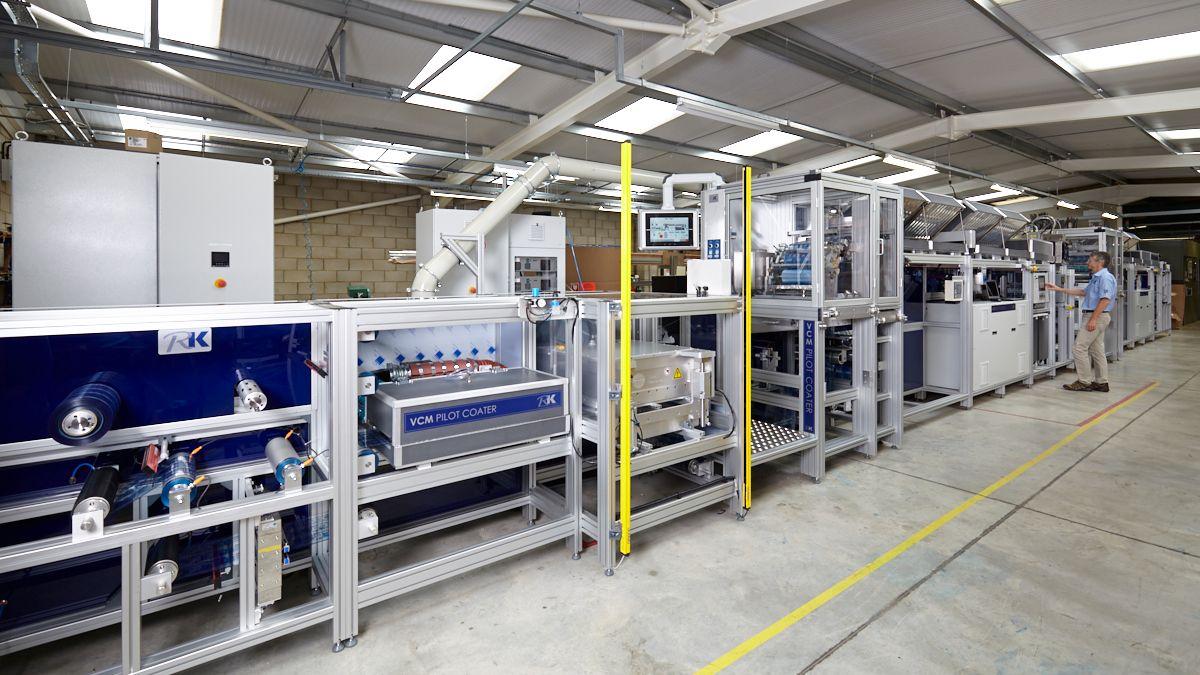Bringing a product to markets such as drug delivery, wound care and diagnostics, as well as woven or non-woven structures is a lengthy, complex and multi-step process. Even more so as alternative materials or structures are sought as an alternative to fossil fuel derivatives.
Products must be manufactured to tight tolerances and to exact specifications. Research and development, design, product verification, validation, regulatory compliance and market placement are all necessary hurdles that need to be overcome. Coatings and coaters are important process tools as adhesive-coated medical foams, PS fixation devices, diagnostic strips, grounding pads, and breathable films, which rely upon coating systems for the form and functionality of the finished product. Pilot coating systems, especially those such as the VCML play a critical role in enabling the research and development team and converting shop to bring a prototype, a concept or a product to realisation and to the satisfaction of all the regulatory authorities.
Coating of a Cannabis-impregnated medical patch
Concern for the environment, the need to reduce carbon footprint and look for more suitable bio-based materials has resulted in RK Print Coat Instruments Ltd becoming involved in the supply of a custom-configured VCML pilot coater for the coating of a Cannabis impregnated medical patch. This product needs to be cured by ‘steam’ rather than just hot air.
The variety of materials that this knife-over-roll coater is engaged in trialling includes Seaweed Polysaccharides such as Alginate, Agar and Carrageenan. These are difficult to apply and cure because of the low solid content and high water content. Primarily these materials are used for edible coatings but are being cast as biodegradable films. The properties that make materials such as filmic materials, foils, adhesives, non-woven, silicone gel sheets and composite materials or laminates so indispensable for medical dressings; drug and fluid delivery often make them challenging to coat and convert. When processing some of these materials there is a tendency for them to be dimensionally unstable; some are prone to tear or are thin or ultra-thin. Careful deposition of coatings is necessary and they require adhesive systems that are optimised for fail-free performance no matter how challenging the conditions.
Advances have bought us transparent dressings. Filmic or bio-based dressings are made up of a polymer membrane of varying thickness coated on one side with an adhesive that is impermeable to water and other liquids and to bacteria but permeable to moisture vapour and gases. Other options for dressing include the composites: essentially a single product that is comprised of multi-functional, multiple layers incorporating a semi or non-adherent pad that covers a wound. Composite dressings often feature as part of the make-up for an adhesive border that is made of a non-woven fabric or an adhesive-coated transparent film.
Anti-microbial dressings
Wound care and diagnostics also include the anti-microbial dressings, the gauzes; the non-woven; the amorphous and/or impregnated hydrogels; the impregnated dressings; absorptive dressings and so on. Then there are the various structures used to hold systems temporarily in place: for the stoma/PIC line and other devices.
Care needs to be exercised when selecting coater applicator technology. Economic and product viability over time rests to some extent on the suitability of the coating applicator technology; web handling and tension control and method of drying or curing. Consideration needs to be given to the characteristics of the web material to be processed and the properties of the associated components. What is the web width, desired coating speed, and thickness of the material? What is the nature of the coating fluid, the viscosity parameters and how best to dry or cure? Once the various processing elements are known decision may be made as to whether or not a pre-metered or post metred method of coating is the way to go.
The coating of products for medical items such as wound care proceeds from conception to reality from a different perspective than many other products. Speed is less of an issue but accuracy is a must. The VCML pilot coater offers a wide range of selectable coating applicators and other technologies and is particularly useful for product development and as already mentioned is ideal for trialling and bringing to market bio-based and biodegradable flexible structures.
Built to customer requirements
The VCM, the customer-bespoke wider web width pilot or production coater is an alternative to the VCML. No two machines are the same; each is built to customer requirements and under strict commercial confidentiality conditions.
There are areas of commonality in that the VCM does include high-specification drives, tension and web control equipment and may be configured for clean room conditions. The rigid and stable framework is the foundation of the system facilitating the processing of wider and heavier substrates while allowing considerable flexibility to expand or modify the machine as processing or product development needs change over time. Selectable coating technology may include gravure, offset-gravure, reverse gravure and many more.
Written by Tom Kerchiss, Chairman of RK Print Coat Instruments Ltd.

